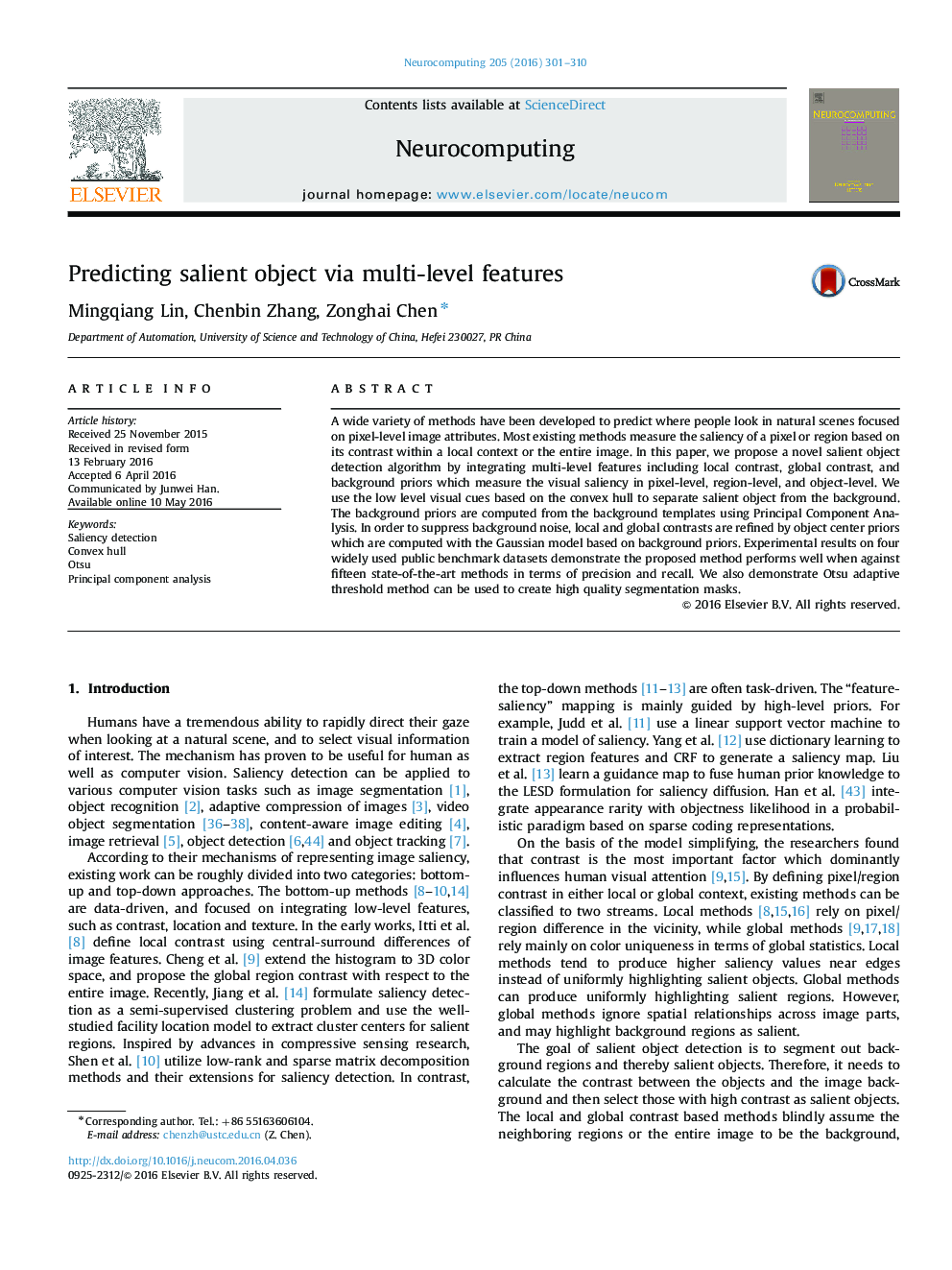| Article ID | Journal | Published Year | Pages | File Type |
|---|---|---|---|---|
| 405701 | Neurocomputing | 2016 | 10 Pages |
•Combine multi-level features including local contrast, global contrast, and background priors which measure the visual saliency in pixel-level, region-level, and object-level.•We use the low level visual cues based on the convex hull to separate salient object from the background. The background priors of object are computed from the background templates using PCA.•In order to suppress background noise, local and global contrasts are refined by object center priors which are computed with the Gaussian model based on background priors.
A wide variety of methods have been developed to predict where people look in natural scenes focused on pixel-level image attributes. Most existing methods measure the saliency of a pixel or region based on its contrast within a local context or the entire image. In this paper, we propose a novel salient object detection algorithm by integrating multi-level features including local contrast, global contrast, and background priors which measure the visual saliency in pixel-level, region-level, and object-level. We use the low level visual cues based on the convex hull to separate salient object from the background. The background priors are computed from the background templates using Principal Component Analysis. In order to suppress background noise, local and global contrasts are refined by object center priors which are computed with the Gaussian model based on background priors. Experimental results on four widely used public benchmark datasets demonstrate the proposed method performs well when against fifteen state-of-the-art methods in terms of precision and recall. We also demonstrate Otsu adaptive threshold method can be used to create high quality segmentation masks.
